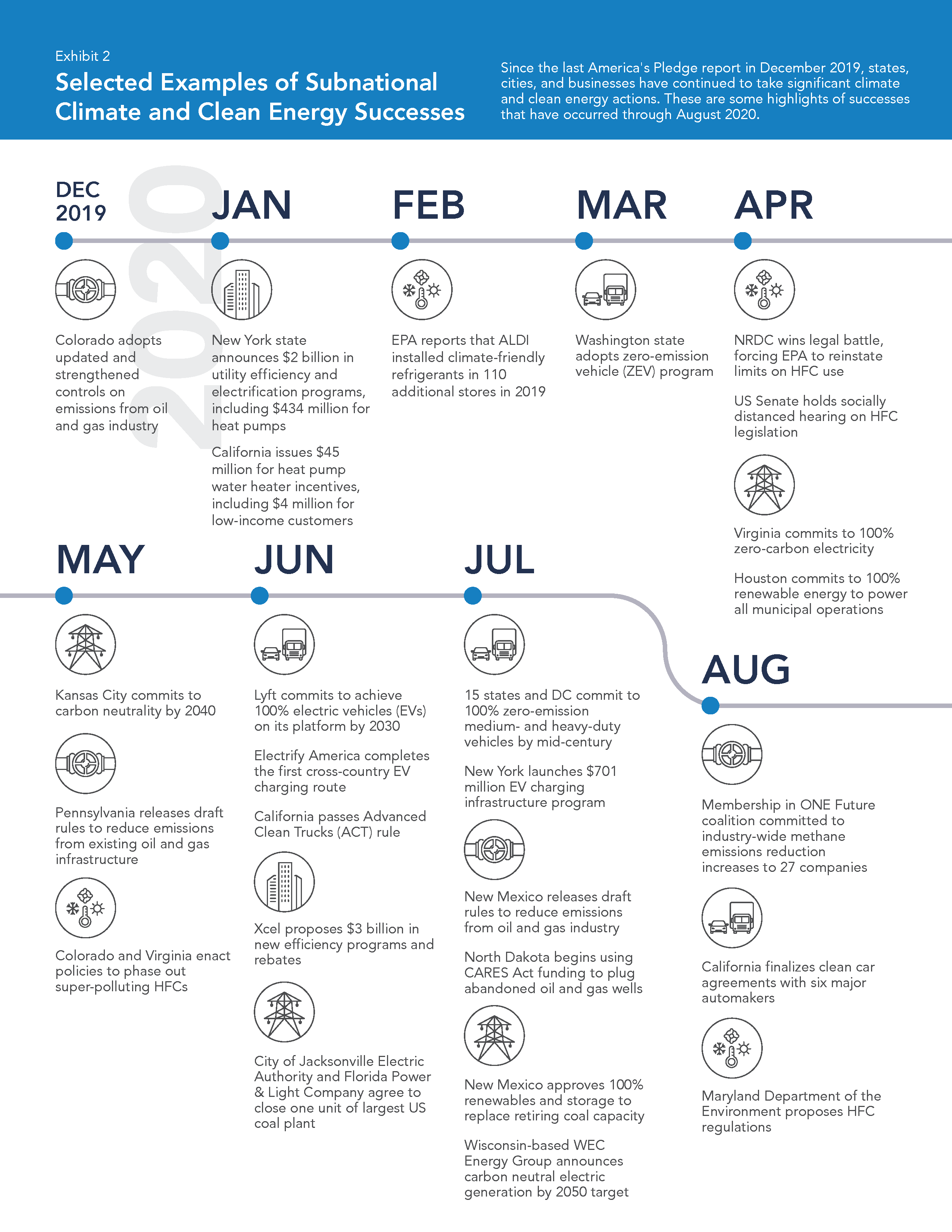Delivering on America’s Pledge in 2020 and the We Are Still In Era
The unique circumstances of 2020 demanded two separate analyses from America’s Pledge to determine the state of bottom-up climate leadership in the United States.
Delivering on America’s Pledge: Achieving Climate Progress in 2020 focuses on the 2030 impact of this year’s COVID-19 pandemic and subsequent economic recession. The report analyzes long-term impacts of the pandemic on the ability of states, cities, businesses, and others to drive the ambitious 2030 emissions reductions modeled in the December 2019 report, Accelerating America’s Pledge. The report also identifies how economic recovery and stimulus packages provide a critical opportunity to maintain momentum and further spur needed climate action.
We Are Still In to Deliver on America’s Pledge: A Retrospective provides a look back at the past three years of state, city, and business climate leadership, since the founding of We Are Still In and America’s Pledge. The retrospective aggregates emissions reduction efforts from a diverse coalition of non-federal leaders, showcasing the unprecedented action by state and local leaders that has kept the U.S. on a path of climate progress.
The analysis was unveiled at the Bloomberg Green Festival in September 2020
Together, these two documents give an analysis of our past and our present, and can be used to better inform the available opportunities for climate progress.
Key Findings:
Throughout the past three years, states, cities, and businesses have taken unprecedented climate action that has kept the U.S. on a path of climate progress. In the face of opposition and climate denialism from the federal government, U.S. non-federal leaders have doubled down on cross-sector climate action that is helping reduce emissions from the bottom-up.
2020 has been a year of immense turmoil and rapid change, but that hasn’t slowed state and local climate action. Despite the challenges posed by COVID-19 and slashed budgets, states, cities, businesses, and others have maintained a steady stream of climate and clean energy progress.

Our analysis suggests America has passed a tipping point in its energy transition and that clean energy is here to stay. Demand for clean technologies has proven resilient due to unprecedented actions from U.S. state and local leaders, strong market forces, and overwhelming public demand.
Our sector-by-sector analysis increases our confidence in the ability of bottom-up leaders to drive the ambitious 2030 emissions reductions modeled in Accelerating America’s Pledge, despite the challenges posed by COVID-19. The continued leadership from diverse states, cities, and businesses in five key sectors — electricity, transportation, buildings, methane, and HFCs — demonstrate there are powerful and resilient winds of change sweeping America’s energy landscape.

With nearly two-thirds of Americans believing the federal government should act on climate change, public opinion and political momentum towards a clean energy economy are at an all-time high. As Americans begin to see the connections between public health, racial equity, and the climate crisis, the push for climate action from all levels of society has never been stronger.
A massive, coordinated effort from both the federal government and states, cities, and businesses is still needed to get onto a 1.5°-aligned emissions reduction pathway. If pandemic economic recovery packages explicitly address the climate crisis and energy transition and are followed by sustained action, America could still cut emissions in half by 2030, putting the country on a path to net zero emissions. Working together, the federal government and states, cities, and businesses can implement policies and programs to stimulate the economy, address climate change, and create a sustainable, clean, and just recovery from COVID-19.

